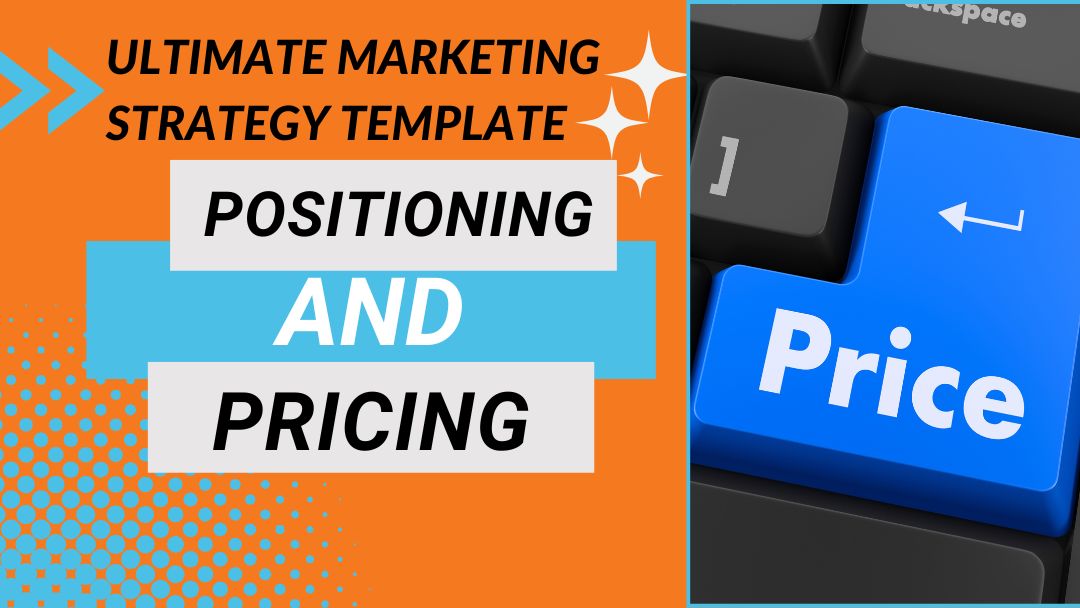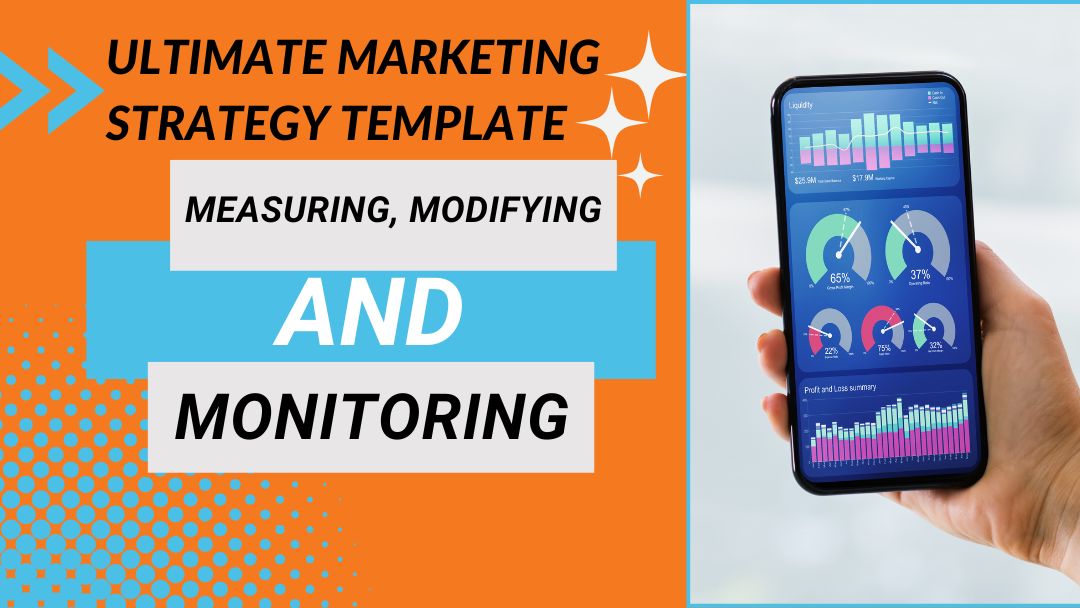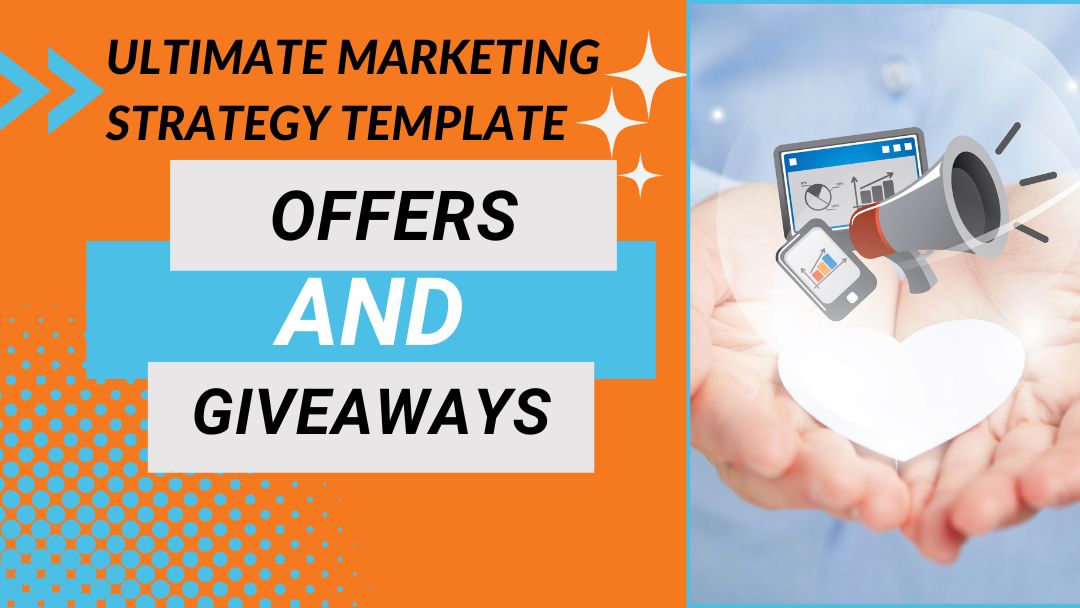In our Ultimate Marketing Strategy series of articles, we look at the various sections you need to include in your marketing strategy to reach, engage and build relationships with your target audience/s. We’ve explored how to create your Executive Summary, Market Research, Target Market, Competitor Research, and last week, your Unique Selling Points (USPs). In this week’s Part 6, we’re looking at how to complete the positioning and pricing section of your marketing strategy.
Our aim with this series is to provide you with a comprehensive guide to help you create a compelling and complete marketing strategy. So you know exactly how to take your products or services forward, as well as strengthening your position with potential investors.
A good marketing strategy acts as a roadmap to success, enabling you to:
- Understand how to attract and find customers
- Pinpoint which steps to take to carry your products/ services forward
- Find and secure investment opportunities for your products/services
Our Ultimate Marketing Strategy series aims to give you the tools to succeed with your products/services by making them sellable, profitable and highly sought-after by your audiences.
What is Positioning and Pricing?
The positioning and pricing part of your marketing strategy delves into:
- Where in the market you will position your product, and
- Once you have identified its market positioning, how much you should charge your customers
Market positioning refers to how you want your customers to perceive your products or services relative to similar brands and their products/services. Pricing and positioning need to align; in other words, you need to price your product correctly for its position in the market.
For example, if you’re selling a luxury product or service, its position will be at the high-end of the market and so your price point will reflect this and sit in the higher price bracket. Conversely, if you want to offer value for money, you’ll select a pricing structure that reflects its affordability position.
If there is a marked difference between the price of your product or service and its position in the market, you risk alienating consumers and failing to successfully communicate why your product or service is the best on the market, for your target audiences. Let’s take our luxury product or service example. Imagine that is high-end but you offer budget pricing, people are likely to question the quality of the product and will be less inclined to see the product or service as a luxury offering.
How to Get Pricing and Positioning Right
We’ve put together step-by-step tips on how to find the correct positioning and pricing for your products and services. As with every section of your marketing strategy, the more extensive and well-thought-out your research, the better your marketing strategy will be and the easier it will be to reach your goals.
Step 1: Set Out Your Business Goals
Your business goals, especially your business’s financial goals, should be a driving force in setting your positioning and pricing strategy. The following will help you work out how to set workable business goals:
Profitability
How much money do you want to make on your product/service once you have paid your overheads and cost of goods sold (cogs)? For example, if you want a profit margin of 10%, you’ll need to set your price 10% above your overheads (with a little wiggle room for initial mistakes during launch), so 12% is a fair and cautious target.
When calculating the percentage of overheads each unit will pay (known as contribution), calculate the total cost of your overheads compared to your total expected sales, and divide the cost of your overheads by the number of units sold. This figure indicates your overhead pricing cost consideration.
Next, work out how much your product/service costs to manufacture/provide. Finally, add the 12% profit margin we have just calculated. This is the price you should charge for your product.
For example, if your overheads are £10,000 a month and each product costs £1 to make, based on a 12% profit margin, you need to sell 10,000 units at £1.12 to reach your goal. Is this viable? Or would it make sense to increase the price so your breakeven point is lower? In reality, it is normally the more big-ticket items like a car or a house that run at a margin of between 10-15% with most manufacturing industries achieving 20-30% or more. Researching your market and competitors will provide reliable, relevant and accurate data to help you find an appropriate profit margin for your products/services.
Market penetration
Where in the market do you need to position your product/service to make a 12% profit on your product/service? In other words, in which market segment will people pay the price you have chosen to charge for your product?
Cash flow
How soon after selling your product/service do you need to receive payment to manage cash flow concerns? Business-to-business (B2B) products and services often have payment terms of 60 days. Do you have the funds to manage cash flow until you receive payments?
Competition
Is your product/service competitively priced and priced for your target audience/s?
Segmentation
Are there new market segments that you can sell your product to?
Conversion
How many prospects do you need to convert to make a profit? Where will you find them? Will they buy from you as per your pricing & positioning?
Step 2: Analyse Market Pricing
You must set your prices within the context of the existing market. To do this, you need to carry out a price analysis on the market.
If your pricing structure is wildly misaligned with your competitors, you either have to have a revolutionary product (unlikely) or you need to reconsider your pricing structure. If your market is saturated with similar products, you will need to set your pricing in line with your competitors and either reduce your overheads as much as possible or increase the number of units you sell. Usually, you need to strike a balance between increasing sales and reducing your overheads.
A good rule of thumb when analysing the market is that if your product is similar to your competitors, you price it similarly, but if your product has value none of your competitors offer, you can increase the price, providing the value you add is something the market wants.
Step 3: Know Your Target Audience
If you have worked on the previous parts of our ‘Ultimate Marketing Plan’ template, you will already have a good understanding of your target audience. You can use that research here to establish whether your pricing matches your target audience profile. Will your chosen demographic pay your prices?
Step 4: Understand Your Competitors
Again, you will already have some understanding of your competitors’ position in the market. You must identify your primary competitors and evaluate their pricing structure. Choose at least 3 competitors to analyse. How much do they charge for each unit? Do they offer volume discounts? Does your product offer something there doesn’t, and if so can you add a value profit to your product?
It is also worth doing some analysis on less direct customers so that you have a good idea of the market pricing structure in general.
Step 5: Choose a Pricing Strategy To Test
Now that you have a good idea of the market and your position within it — if you’re luxury or affordable, who you will sell to, who your competitors are — you can now choose the best pricing strategy to get started. Look at each strategy below and opt for one that aligns with your business goals and marketing strategy research.
Market Penetration
The strategy that most brands initially opt for is pricing for market penetration. Here, you lower your prices to attract people to your products or services instead of your competitors’ offerings. If you’re selling a product or service that does the same or similar as a competitor’s then you undercut them to draw attention to your brand. As your product becomes popular, you then raise your prices to match your 12% profit margin. This can be a risky strategy if you’re working to tight margins though, as your customers may go back to your competitor, their original brand, when you increase your prices.
Value
Value pricing is used when external factors such as a recession or new competitors in the market are creating a drop in your sales. It may be worth lowering your price in the short term, though, to continue to get the volume of sales through your business. Bear in mind that you may be able to recoup some of this by negotiating with your suppliers.
Subscription-based
The subscription-based pricing model is widely used by software companies and those that supply fast moving consumer goods (FMCG). Some companies even offer a discount to encourage consumers to pay for a whole year upfront (which also helps to build a healthy cash flow). Software companies use the subscription model so that their customers always have the latest version and features.
Skimming
Skimming is often applied when a brand is offering something new to the market. Price skimming is the practice of starting a product or service at a higher price when you’re presenting a unique offering in the marketplace, before lowering the price when your product becomes more mainstream. You’re maximising your profits when your product is new and then striving to attract a wider customer base as the product becomes more established. Technology products almost always launch this way; prices start high for the next must-have gadget and then reduce over time.
Premium
Premium pricing refers to positioning your products or services in the high-end of the marketplace. Your product has USPs that none of your competitors can offer and your product pricing reflects this premium positioning.
Freemium
Freemium pricing is popular in the software industry as a way to entice consumers to use products or services. The free version often has unavailable features that can be paid for on a one-off or a subscription basis. Used extensively in the gaming market, it is also used by companies like Hootsuite, Hubspot and Spotify.
Time-based
Time-based pricing is used in the holiday industry to maximise profits in the summer seasons when resorts are generally busier. Airlines also charge more when their aircraft is closer to total occupancy. It also offer deals if there is spare capacity and little time left before departure. It’s a possible strategy for other businesses too as you can charge more to speed up the delivery time for a service, offering a same day or next day service, for example, when you would normally take five days.
Offer a bundle
Bundle pricing can be used in conjunction with other strategies to maximise the total sale value from a single customer. You can group several of your products and services together and sell them at a lower price when they are all bought together. It is often used to clear older stock fast when a new product is being released.
As you progress with your sales and marketing, spend time gathering data to establish which strategies are working for you and which need modifying or abandoning in favour of more successful ones.
Summary
When choosing your positioning and pricing strategy, you need to keep your competitors, target audience, overheads, and costs in mind. You need to understand what value your product has in relation to similar products on the market and if this added value is enough to set a price premium.
To understand this, you need to know your customers and if they’re willing to pay the premium, or whether you’d be better basing your strategy on competitive pricing. To identify competitive pricing, you need to know how your competitors are pricing their products.
You also need to know if the pricing structure you choose is suitable for your brand. Analyse your overheads, the cost of goods sold and how many units you anticipate selling.
Finally, implement pricing strategies on a trial and error basis to test and measure how well they’re performing. Adjust your strategy as you move forward.
Tip: We know that positioning and pricing can feel daunting. Yet while it’s invaluable to get a workable plan in place, it doesn’t mean its possible to forecast every eventuality, or that you can discover all of the information you need to create the perfect plan. For example, it’s likely you’ll be unable to work out your competitors’ overheads or cogs. It’s simply a matter of making an educated guess based on your research.
Your research efforts will help you to mitigate unknowns. A marketing strategy will always be a dynamic working document, so never ‘complete’. But informed insights are superior than a blank page. The more effort you put in, the greater your rewards will be.
What Next?
Now that you have all the information you need to create your positioning and pricing strategy, you can use it to select your marketing activities and craft your content. Make Your Mark. Find Your Roar!
Check out the rest of our Ultimate Marketing Strategy series for guidance, insights and tips:
- Part 1: Executive Summary
- Part 2: Market Research
- Part 3: Target Market
- Part 4: Competitor Research
- Part 5: Unique Selling Points (USPs)
- Part 6: Positioning and Pricing
- Part 7: Marketing Promotion and Distribution
- Part 8: Budget: Offers and Giveaways
- Part 9: Marketing Goals and Conversions
- Part 10: Marketing Metrics: Measuring, Modifying and Monitoring





0 Comments